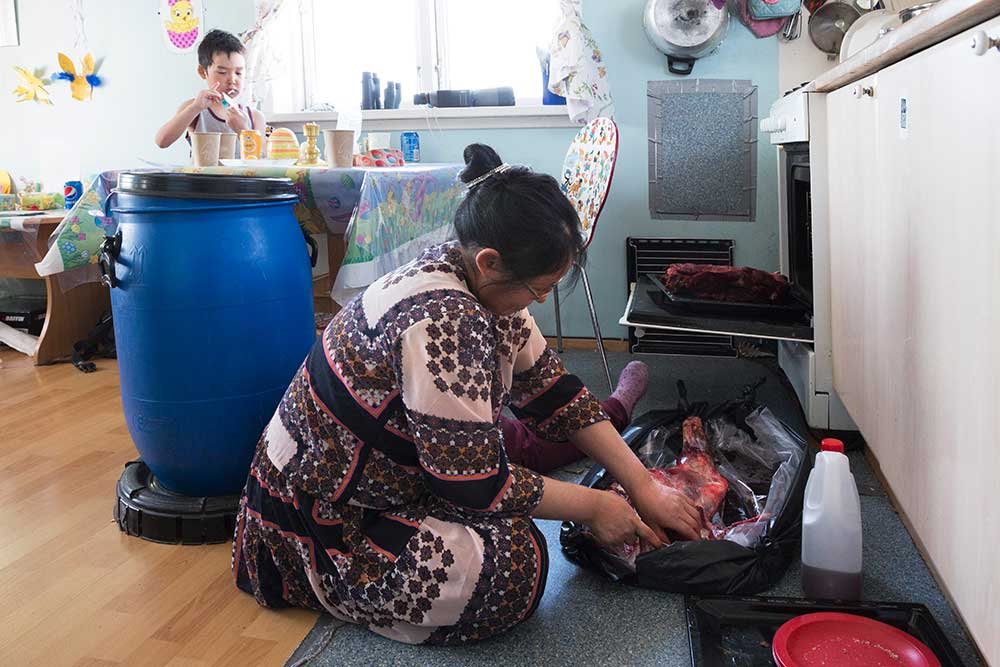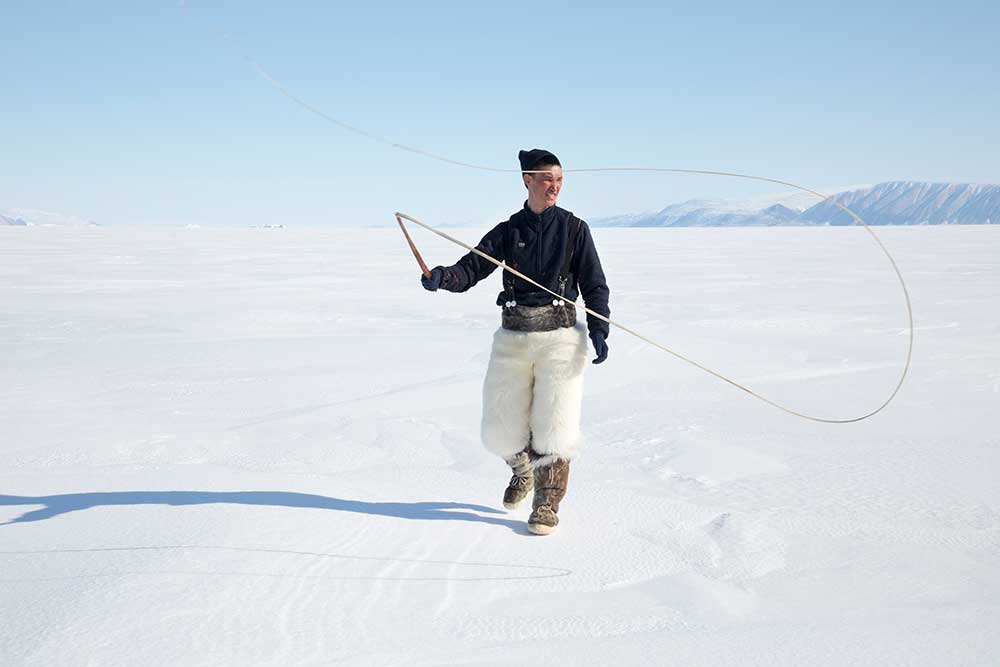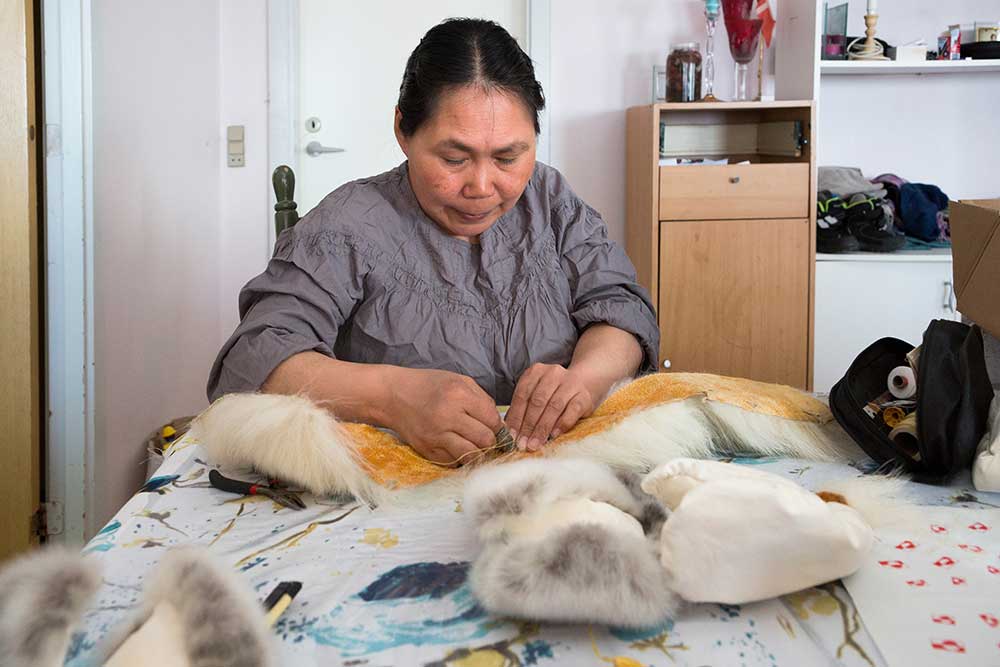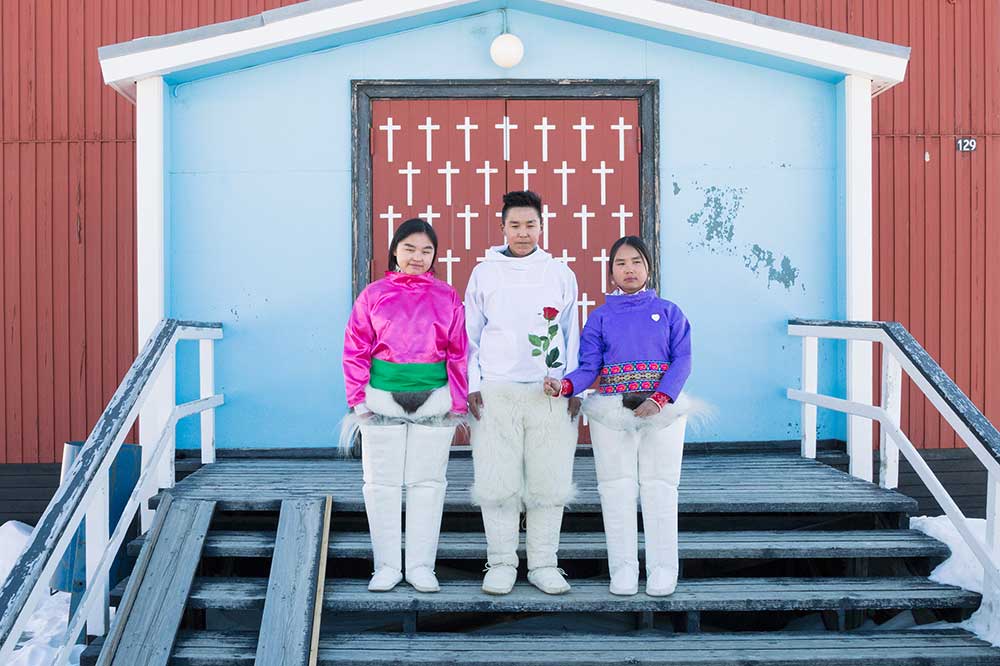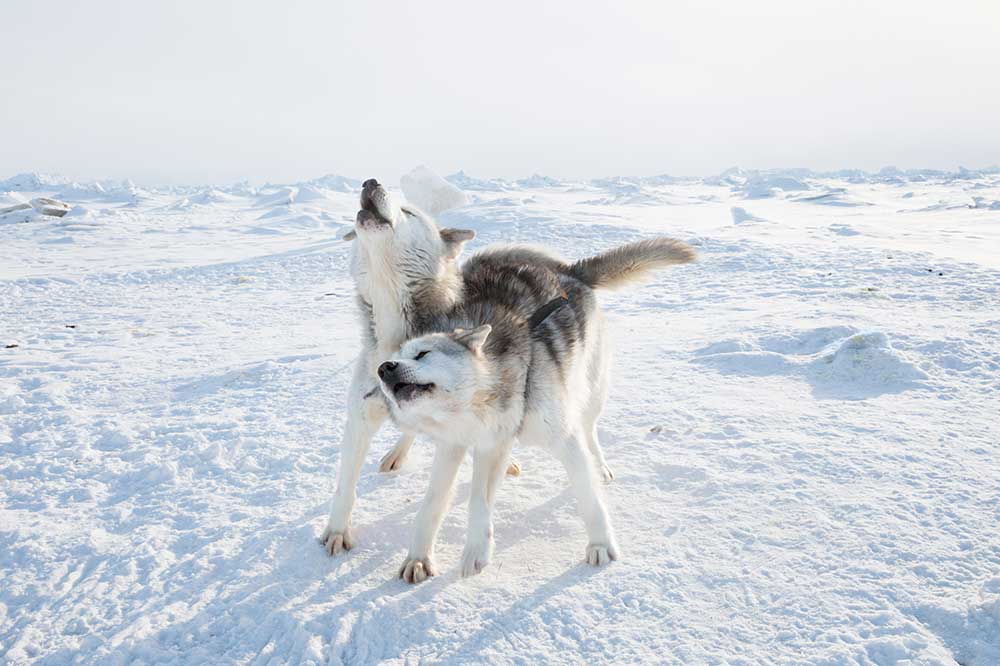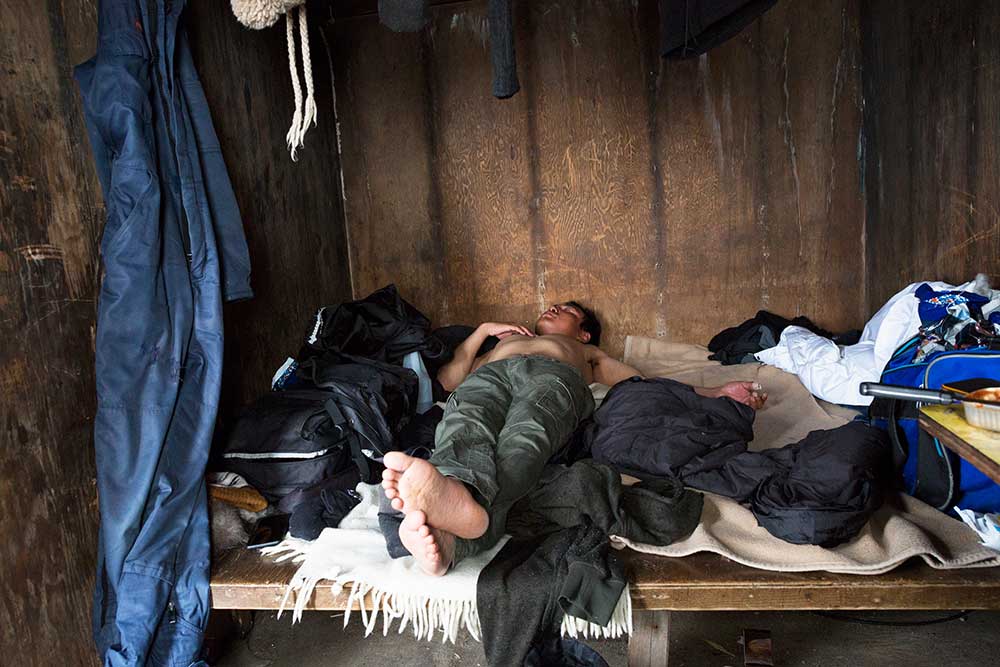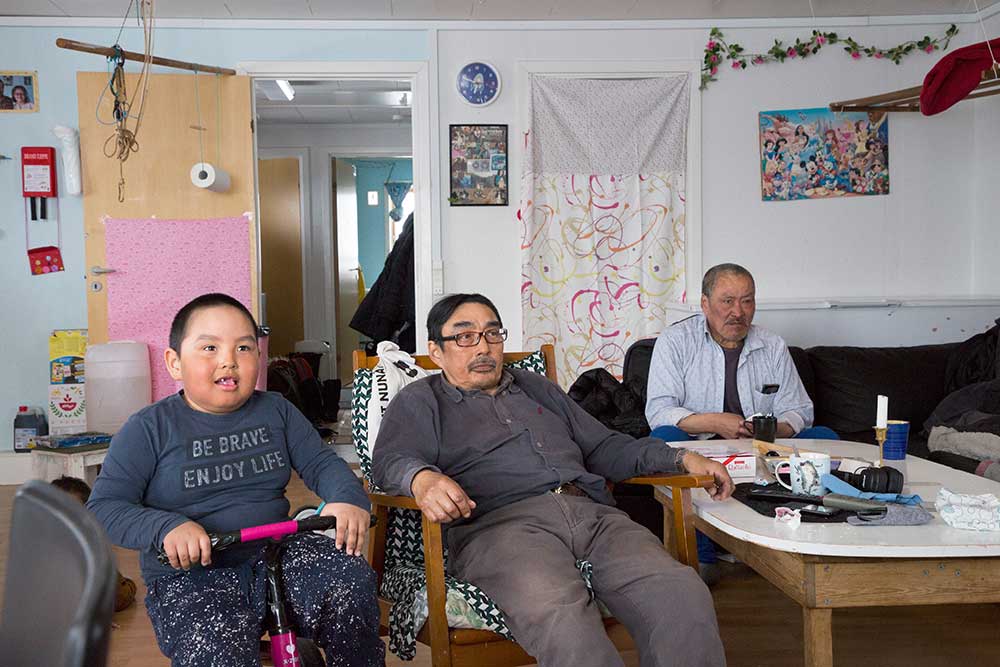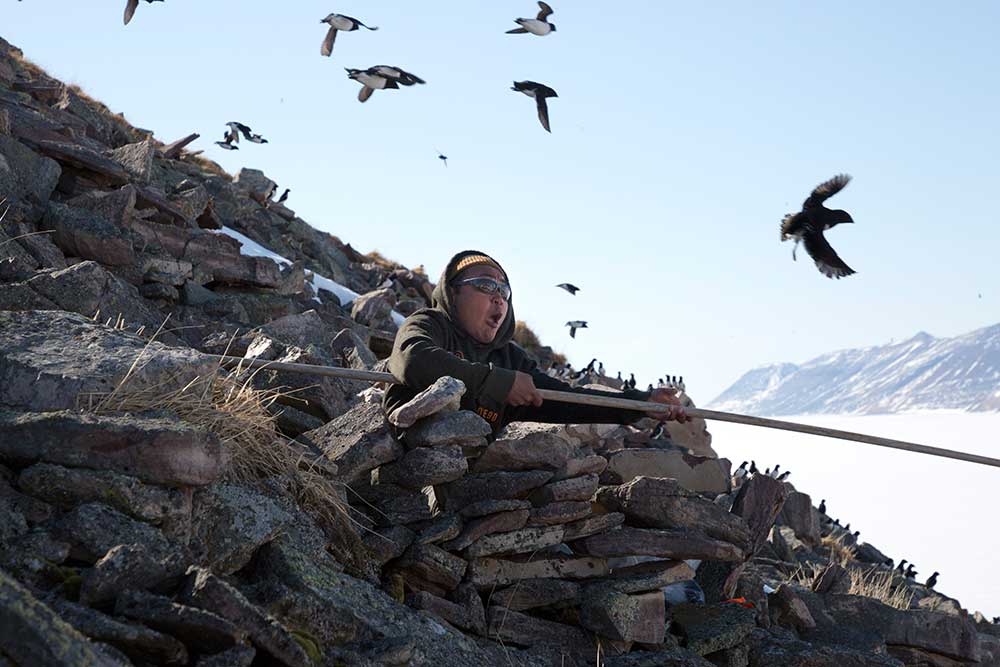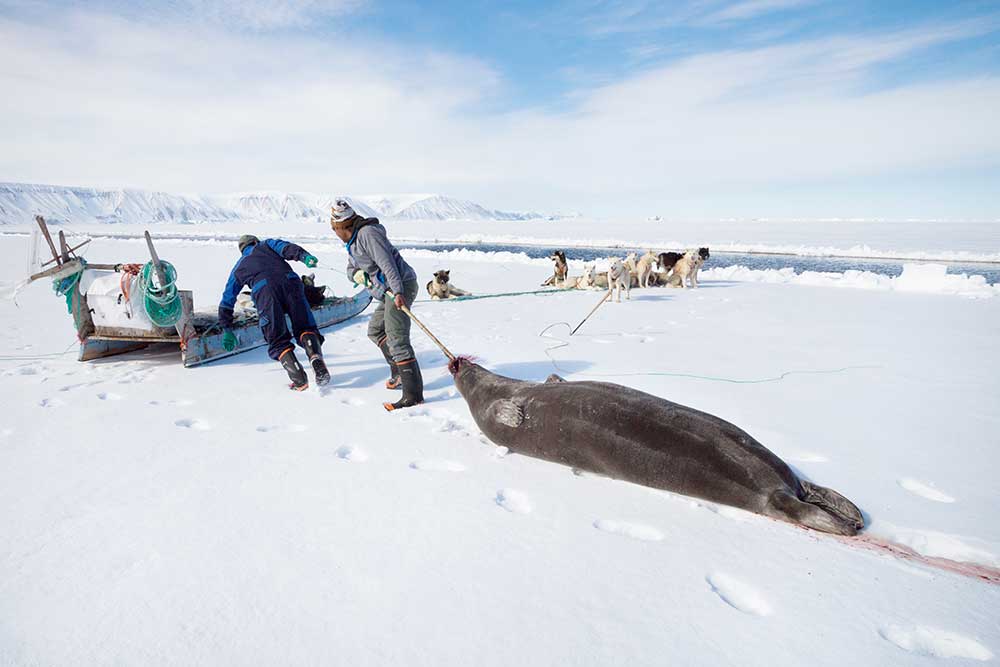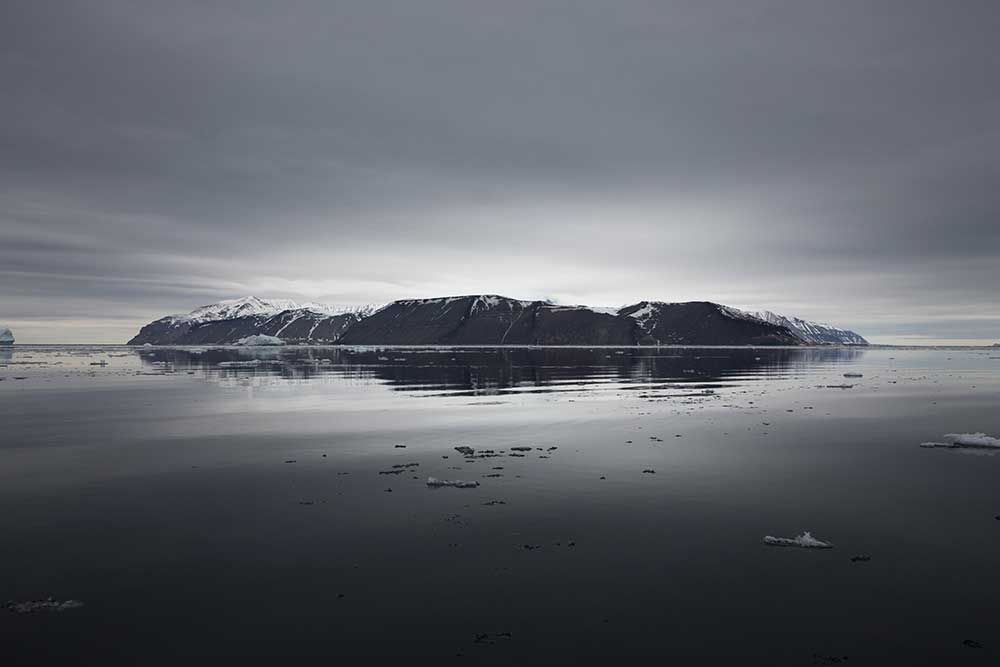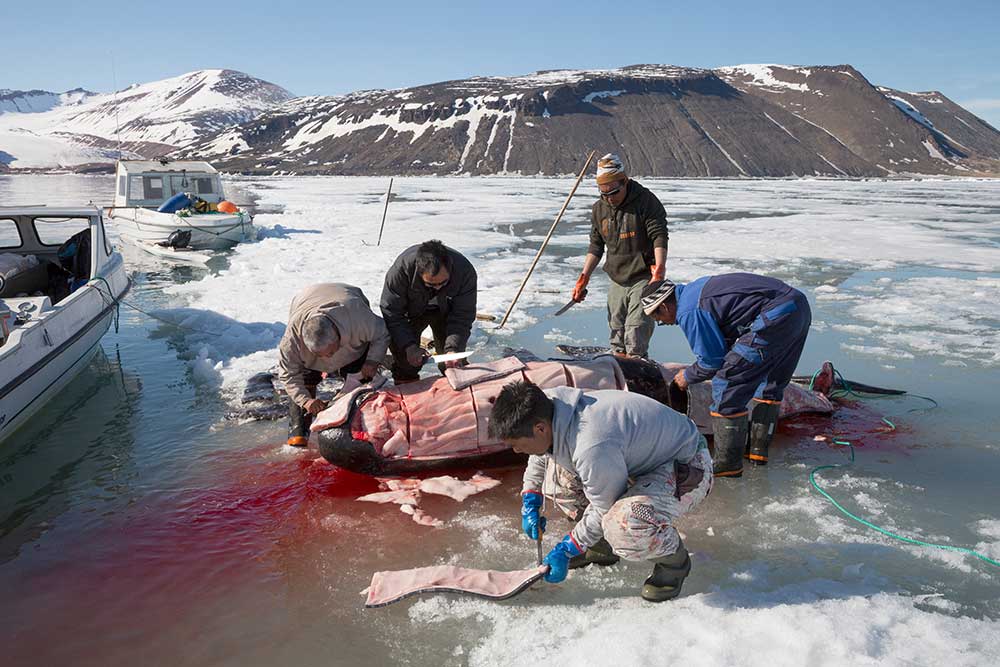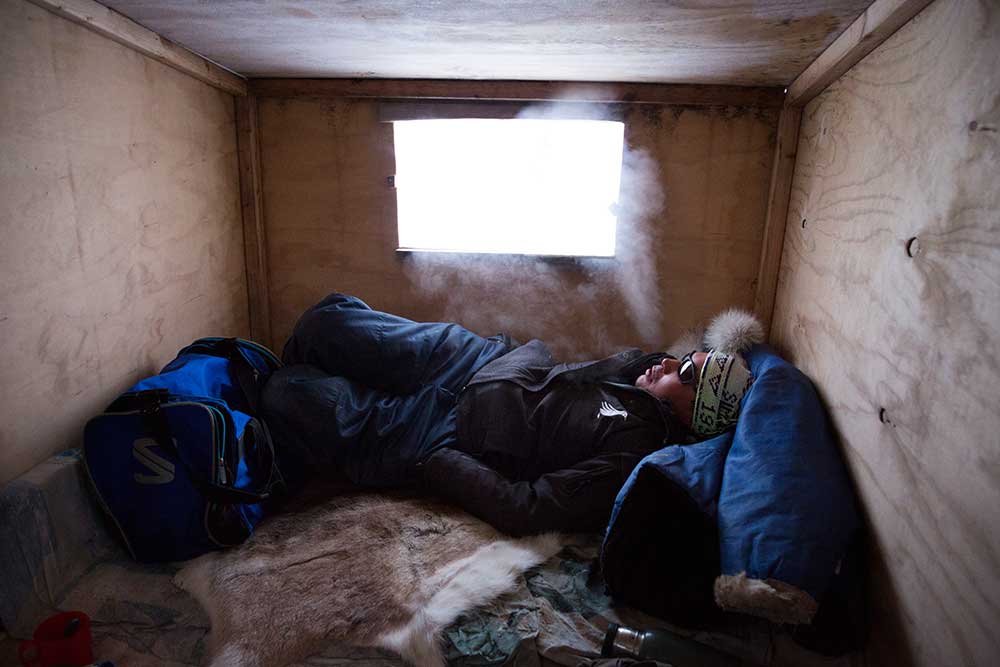I have always been fascinated by North Greenland and I have been lucky enough to be able to stay on the land of ice for a decade. I have acquired a lot of respect for the way of life of the inhabitants.
These people knew how to adapt to a hostile environment, where even the Vikings failed! Far from stereotypes, Greenland has evolved, modernized but maintains a responsible way of life, close to nature. As Jean Malaurie evokes, this nation, which was nevertheless called primitive, could be a model for our consumer societies in the face of the destruction of the planet!
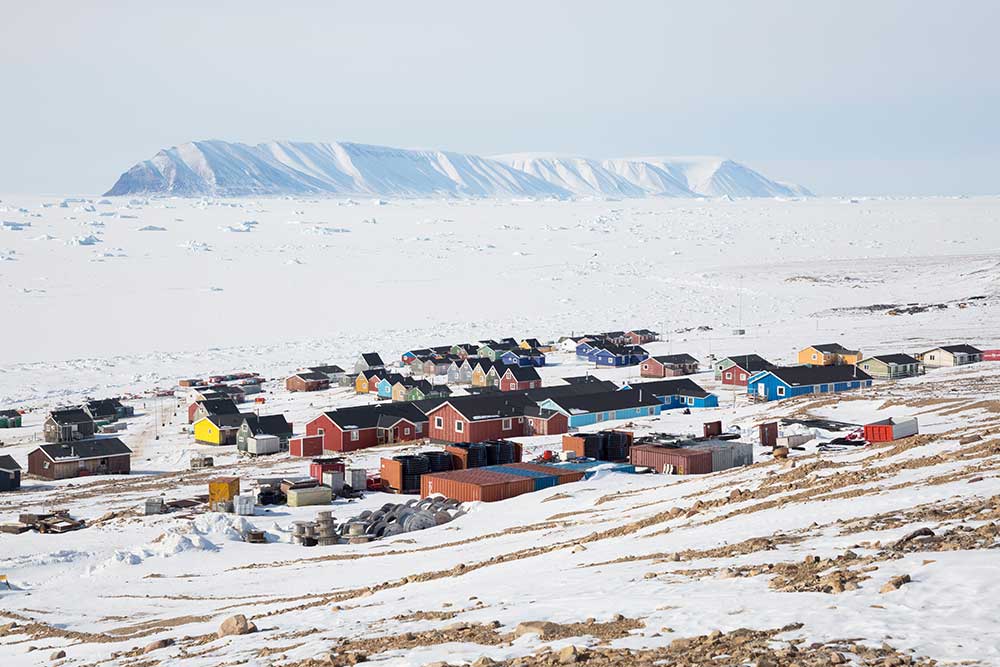
March 2022, I decide to return to the North of the country to live there for several months. A family, the Simigaqs, welcome me into their intimacy. I share their daily life between Qaanaaq Qeqertat and Siorapaluk. In these elsewhere I rediscover the beauty of the world, of the human and the happiness of being free to do nothing! Here the clock is neither a god nor a monster. We don’t care! According to the Inuit proverb: «silarsuaq sikullu kisimi naagalavoq», «only the climate and the ice are masters». We live according to the seasons. Patience is a virtue. «Imaqa aqagu!», «maybe tomorrow !», they repeat incessantly! Former animists, respect for nature is always present. We listen to it, we adapt to it and we live thanks to the resources it offers us. Greenlanders have always shared a strong connection with their environment. Because of this they managed to develop an understanding of nature and the animal world far superior to ours!
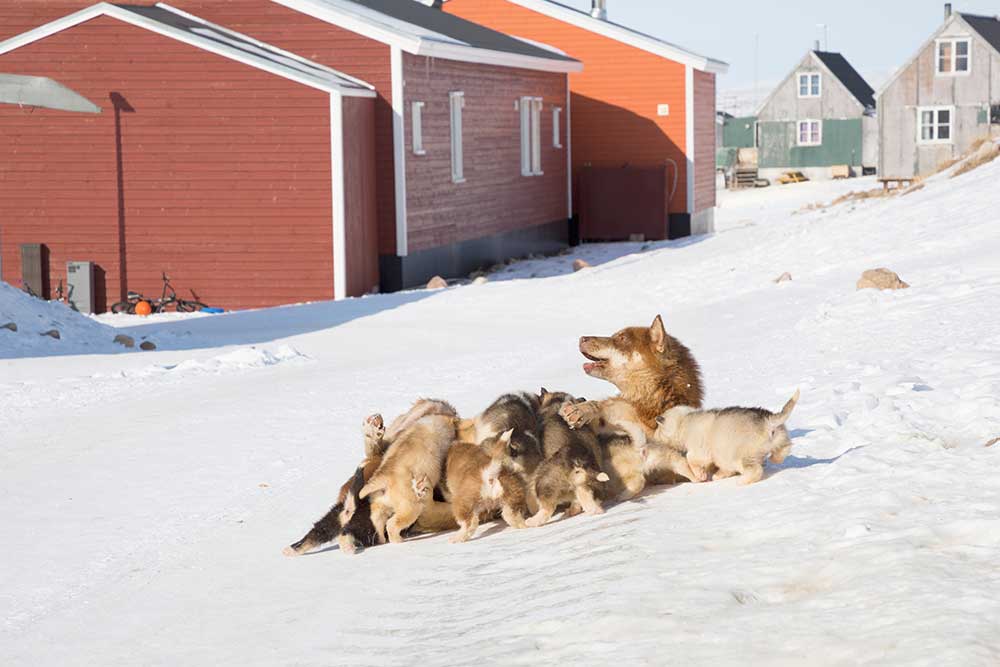
Life is still mainly centered on the riches of the sea. If the weather is favorable we go fishing or hunting. We also visit family in nearby villages, especially on holidays. Ice is an important link between communities! If the weather is bad we stay at home by the fire. I was then introduced to local cuisine, but also to crafts: the sculpture of tupilak and the creation of jewellery! I am also learning to treat skins and sew them. I practice speaking the northern language Qaanaarmiutut. I often cause the laughter of Greenlanders by my clumsiness! Hospitality, humor, friendliness and sharing are of honor! Life is collective!
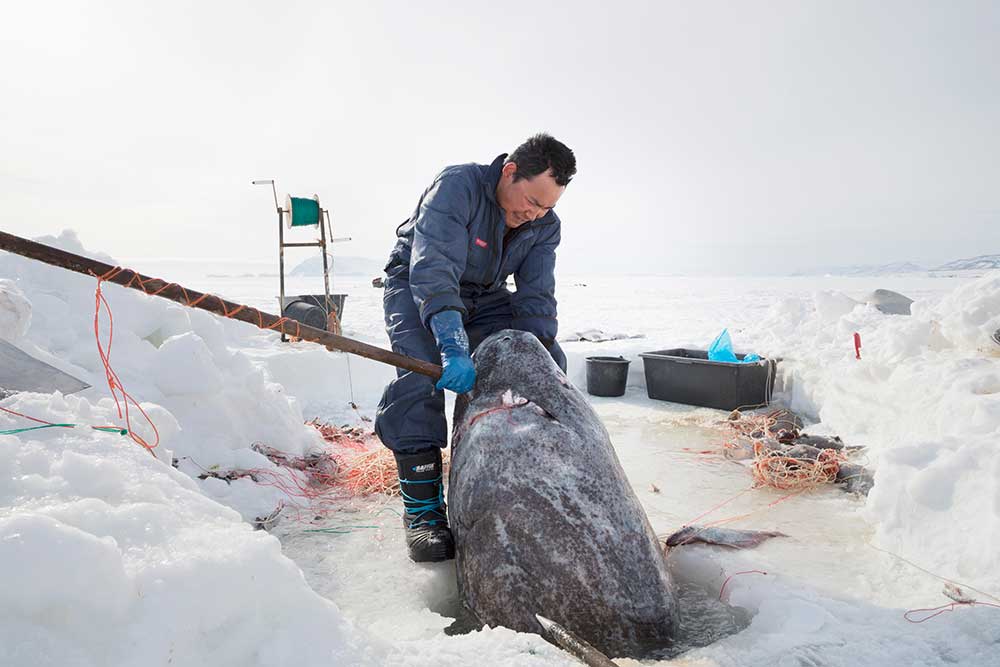
In April we mainly focus on ice fishing. We set lines with bait. We take out rays, cod and when a halibut arrives the fisherman shouts with joy: «Qaleralik! Nuannaartorruanga!», «Halibut! I am happy !» This fish is very popular with Greenlanders. It is also the main one that is sold at the fishing factory. Sometimes a shark, god of the depths up to 400 years old, swallows the hooks. The inuk is sad. We must remount the beast or cut the lines and lose our spoils…
For Easter, we go to Qeqertat in the family. A rudimentary site of about twenty inhabitants, without a telephone network and having for electricity a simple small generator! The children in boarding school in Qaanaaq have returned for the holidays! Reindeer meat came out for the occasion. The families gather at the cemetery then we continue with a game of bingo with all the inhabitants. I win a ham and a tablecloth decorated with chicks. «Pilluarit!» «Congratulation !» Collective games remain important. They make it possible to fight against isolation in the face of the hostile climate even if in town we now like to discuss on social networks…
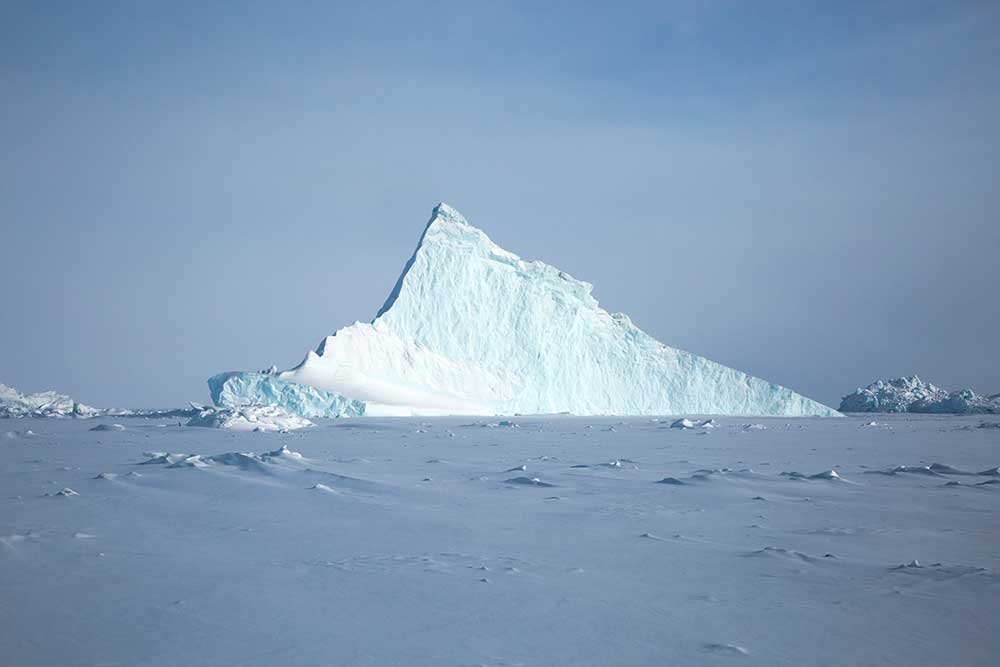
At the end of April, it is the annual sled race in Qaanaaq. All the mushers from North Greenland came to challenge each other. Savissivik’s dogs are still the best! At the end of the race a party is organized in the gymnasium where the winning sleds are carried at arm’s length. The first, the youngest, the oldest, all are rewarded for their courage and tenacity. The local music group then takes over and we dance to fiery Greenlandic music, but also to the good old rock of Johnny Cash. «I walk the line», we all shout in heart, swaying, a Greenlandic beer in hand…
On May 13, the bells ring and the inhabitants gather at the church: it’s time for confirmations, a great day for everyone! The children are dressed in their traditional costume. The church is overflowing, bearskin pants are proudly worn, ivory jewelry sublimates outfits and the Our Father resounds! Curious scene.
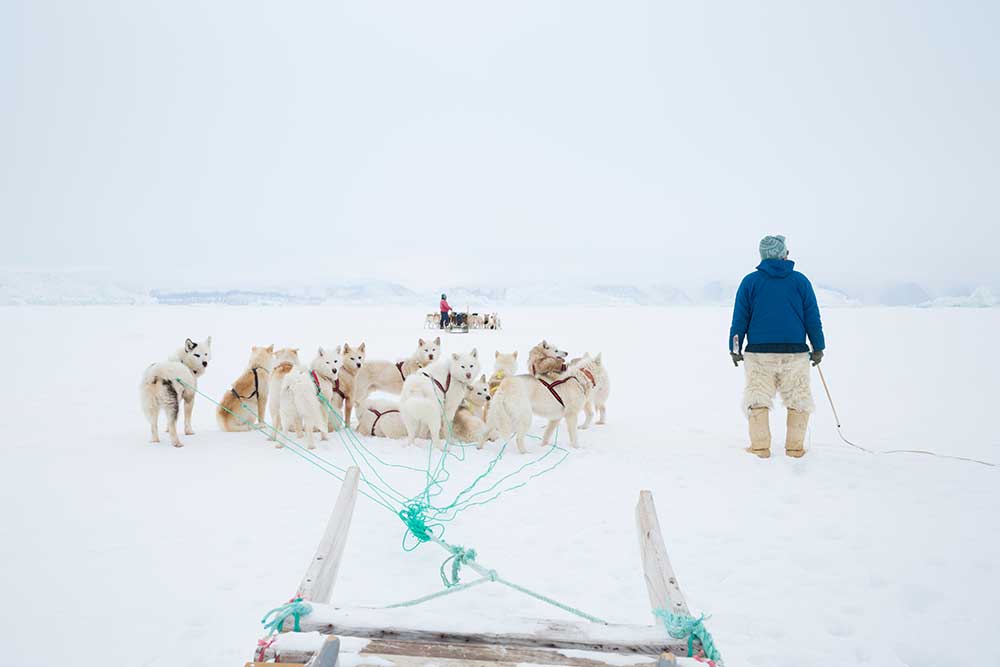
Paul-Émile Victor called the Greenlanders the «seal civilization», we hunt him for a long time during this period. In May, we spend our days sledding on the ice with our dogs as our best accomplices. We sleep in rudimentary trapper cabins. The days are long. The darkness is dead and the sun never goes out. Rimbaud had rediscovered eternity in the embrace of the sea with the sun. I found mine in the infinite light on the ice! A white on white purifier of the soul: a dazzle! On the seal hunt I am the Second. My role is to watch the dogs, harnessed, while the hunter leaves to track the seal on foot for the last kilometres. The animals must not bark or race on the pack ice, scaring the animal away and making me feel a little clumsy. Difficult task, because the good smell of game attracts the keen sense of smell of dogs!
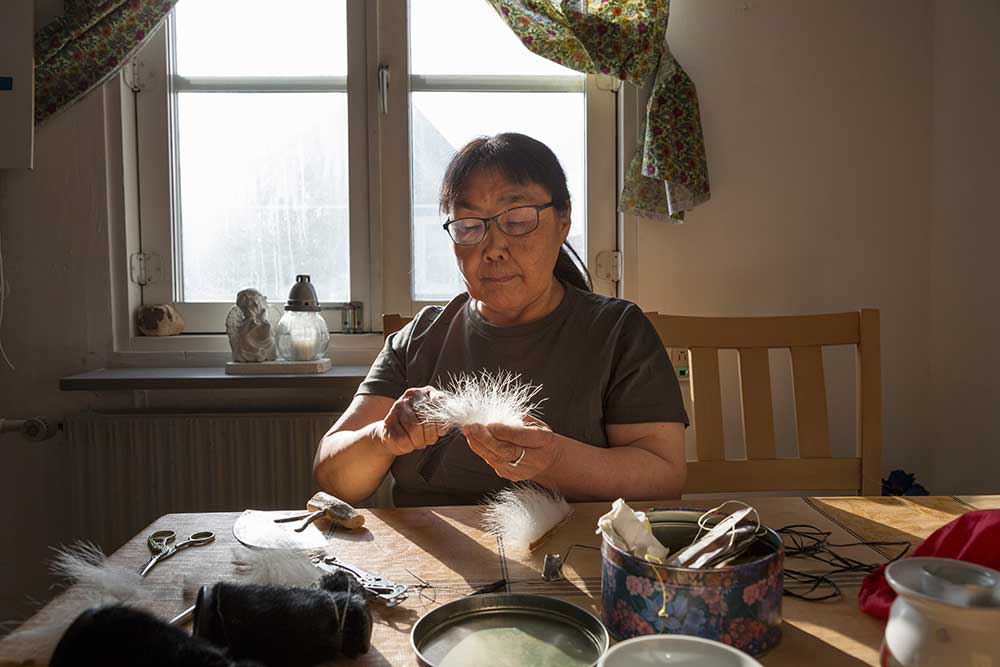
In June we spend a lot of time in Siorapaluk, the northernmost village. There I discovered string games. Using a simple rope stretched between the two hands, the inhabitants weave shapes and tell stories. We recount the last hunting scenes, the bravery of the hunter scaring away the polar bear, but also with a lot of humor the affinities or the disputes between people! Greenlanders are great storytellers. I marvel at this magic, unable to weave a sketchy form!
In Siorapaluk we hunt migratory birds. From May to September millions of appaliarsuit birds come to breed in North Greenland. The inhabitants catch them using landing nets in order to feed themselves and build up provisions for the winter, the kiviaq, a food that has been essential in this harsh environment. We spend our days perched in the mountains. The birds form immense dancing and singing clouds in the sky, a cosmic ballet, a poetic experience of the world! At this moment, hidden in the rocks, I feel like I belong to her, nature, she accepted me and offers me a rare sight and a feeling of fullness…
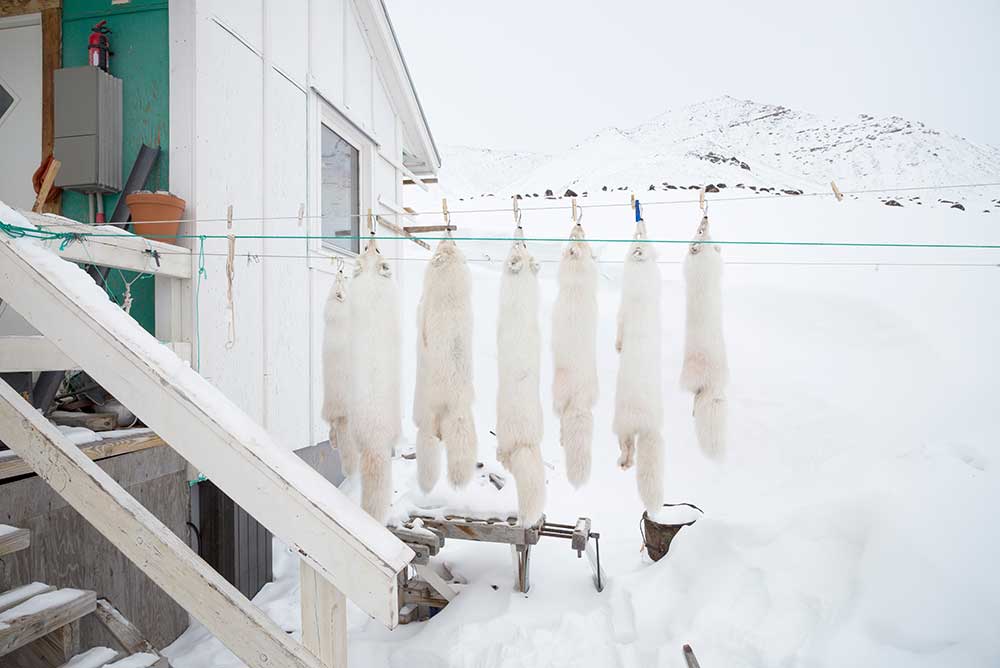
In July the pack ice runs out of steam and we take advantage of the last centimeters of ice to set off on the hunt for unicorns of the seas. The dogs run on the water, leap over the gaps, the sled flies. «Siku ajunngila? », « is the pack ice ok?» , I ask. «Imaqa». «Maybe» they answer! I am never reassured but I have blind faith in my companions. The expected storm ends up breaking the ice. We see the open water, the small boats then improvise brave icebreakers and in a fierce fight we reach the sea. The kayaks then dance with the narwhals. We thank the animal, always respected and savor the mattak (raw skin and fat) which will then be sold in the villages. The debacle is here and it’s time for me to hit the road again…
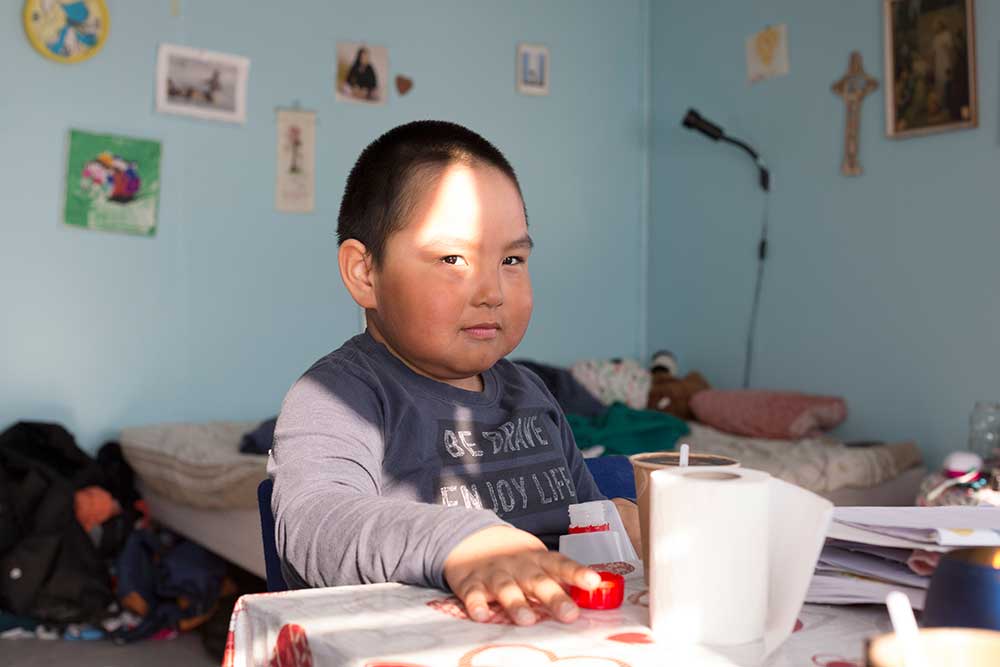
I join Jean Malaurie who, in «Lettre à un inuit de 2022», calls on Greenlanders to take charge of their future, to obtain their independence and to resist! Greenland, colonized by Denmark, obtained its political autonomy in 1979 and is marching towards total independence. For this, the country must diversify its economy. The best solution would be a sustainable development of Greenland: respectful of the environment and the climate. Faced with the scarcity of global resources, the large mining and oil multinationals covet it. Development based on the exploitation of resources, without control, would be catastrophic. According to Henriette Rasmussen, former Minister of Culture, it is necessary to strengthen the education of young people to build an educated nation. A strong, rich country with an animist heritage, which will be able to make the right decisions, not to be manipulated or looted. Greenland, capital for the future of the planet, now has its place on the world map and its geographical position places it as a strategic territory in the Arctic. The Greenlandic rock group Sumé sings: «Katilluta ataatsimut. Makiterniarpugut! Kingulittame pissaraat. Siulitta attataat. Inuit nunagaat», «As a united people, we will rise again! What our ancestors had. Our descendants must inherit. These are the lands of our people. [Official Website]
1979: autonomous government.
2009: increased autonomy. Greenland can make its own decisions about its natural resources
2021: The left-wing environmentalist party “Inuit Ataqatigiit” wins the early legislative elections. This victory
made it possible to temporarily freeze uranium and rare earth mining projects!
2023: Greenland presents a draft constitution in the event of independence!
2025: The next legislative elections will be decisive for the future of the country and small Inuit communities
